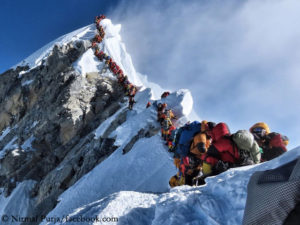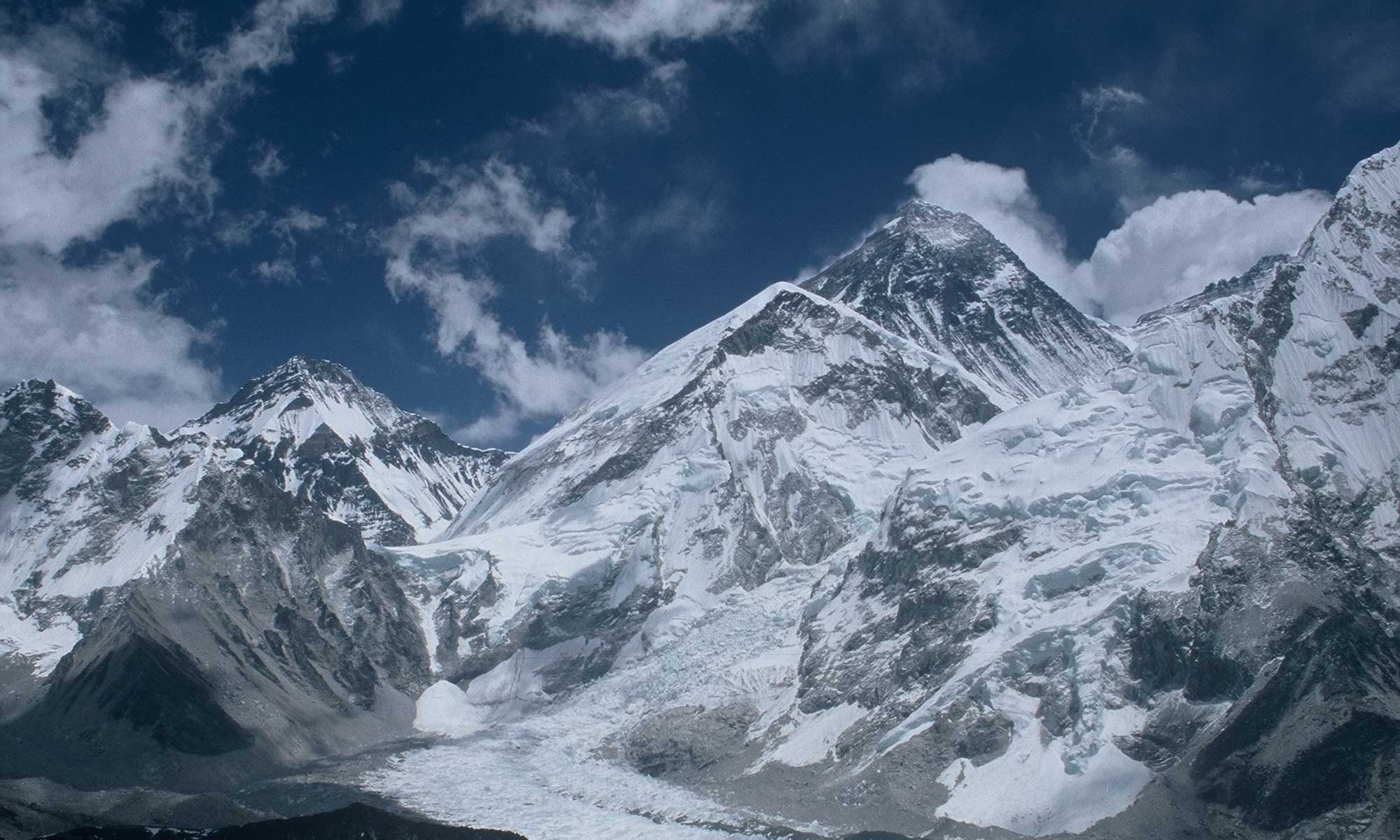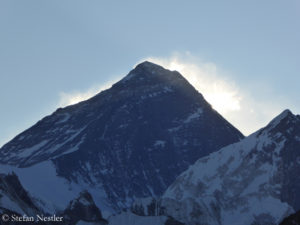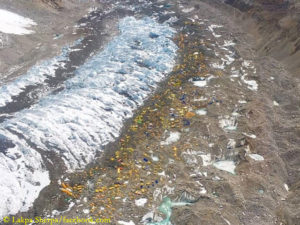Yesterday was Everest Day. On 29 May, Nepal celebrates the anniversary of the first ascent of the highest mountain on earth by the New Zealander Edmund Hillary and Sherpa Tenzing Norgay in 1953 with numerous events – like the Everest Marathon from the base camp down to Namche Bazaar. Maybe Everest Day is also an opportunity to think about whether and if so, what is currently going wrong on Mount Everest.
Rarely I have been asked so often about Everest as in the past days, even by people who have absolutely nothing to do with mountaineering. The high number of deaths this season and the picture published by Nirmal Purja on May 22, which shows a long queue of people on the summit ridge, have once again put Everest in the headlines worldwide, also in the mainstream media. Mostly only black and white was painted. And I was forced to confront the usual prejudices and clichés. No, it’s still not a walk to the top of Everest. No, not all summit candidates are just egomaniacs who normally have nothing to do with mountaineering. No, not all expedition operators are unscrupulous profiteers. No, not all government officials in Nepal are corrupt.
Just a “viral image”?

But is Everest really only “unfairly trashed via (a) viral image of (a) ‘traffic jam on 22 May 2019”, as Karma Tenzing writes on Twitter? He himself reached the highest point at 8,850 meters on 15 May and spent an hour there, “devoid of jams”, according to Karma, who added that this applied to 364 of 365 days a year. So no problem at all?
“Better Management”
“It is not because of the traffic jam that there were casualties,” said also a representative of the Nepalese Ministry of Tourism on Tuesday, referring to the weather conditions, insufficient oxygen supplies and poor equipment as the cause of the comparatively high number of eleven deaths on Everest this spring. As a consequence, however, the number of permits would not be reduced in 2020, he said, but two ropes would be fixed below the summit, “so there is better management of the flow of climbers”. Two tracks on the narrow summit ridge? Exciting!
Traffic jam with announcement
To speak of “management” on Everest seems to me currently more than daring. The government liaison officer in the base camp announced on 20 May via Facebook that two days later 297 people wanted to reach the summit. The traffic jam developed with announcement, it was deliberately accepted, including the risk. Problably nobody will deny the fact that the danger of oxygen running short increases extremely if you have to wait more than two hours at the South Summit at 8,750 meters.
Emotional and financial nightmare
It does not help to just bury our heads in the sand and pretend that everything is normal and must be like it is. When people die, it must be allowed to discuss whether their death could have been prevented. The mountaineers who have died on Everest leave behind families who not only experience an emotional nightmare, but also a financial one. At least in the case of the Sherpas, this is not the exception, but rather the rule. My sympathies go out to all those left behind.
Hardly any “classic” mountain accidents
But they too will have known and feared that something could happen to their relatives on Everest. After all, mountains are still a dangerous area, with risks that are difficult to calculate, such as avalanches, rock fall, collapsing seracs or sudden fall in temperature. In the Himalayas, the extremely thin air is an additional risk factor. Only one of the eleven fatalities on Everest resulted from a rather “classic” mountain accident: An Irishman slipped during the descent and fell into the depths. The other ten deaths were due to lack of oxygen, exhaustion and resulting high altitude sickness. Was the death of these people really inevitable?
Own abilities are overestimated
From my point of view, not only on Everest, but also on technically more difficult eight-thousenders there are too many clients en route who lack the necessary climbing experience to tackle such a high mountain with a healthy degree of personal responsibility. It is unacceptable that Everest candidates at the base camp have to be instructed on how to put on their crampons. These summit aspirants overestimate their abilities and underestimate the danger. They believe they can buy 100 percent safety.
Saving personnel and oxygen
On the other hand, they often entrust their lives to expedition operators who attract their customers with dumping prices. These operators like to hide where they are saving costs: in the quality of their staff and the amount of oxygen bottles. The latter is calculated so low that it may be sufficient for the ascent and a fast descent, but often not for an emergency. The government could put a stop to this, but for decades it has been avoiding strict Everest rules.
Number of permits should be capped

I am sceptical as to whether the screw, which is already overtightened, can really be turned back again. Too many people hang economically on the umbilical cord of mountain tourism. From my point of view it would be necessary to cap the number of permits, because masses on the mountain increase the risk. There should be mandatory standards for expedition operators: e.g. limited number of team members, mountain guides with international certificates, sufficient bottled oxygen. Summit candidates should be obliged to prove a sufficient level of mountain experience.
Perhaps it would also be an idea to fix ropes – as in the past – only at the real key points and not on the entire route to the summit of Everest and not to distribute bottled oxygen already in Camp 2 at 6,600 meters, but only at the South Col at almost 8,000 meters. Then probably many would reach their limits further down.
Rethinking is necessary
More important than all the regulations, however, seems to me that all concerned turn away from the widespread hubris and return to humility: before the mountain with all its risks – and before their own limits. And not only on Everest Day.
P.S. This blog post was published in German already yesterday. Unfortunately, I managed to translate it into English only today. Sorry for the delay.



